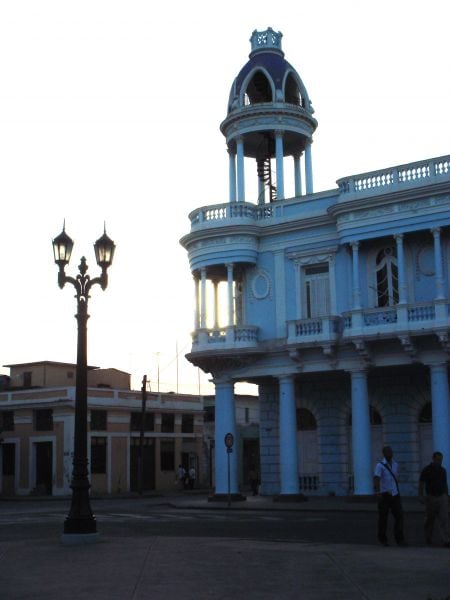Discover 7 hidden attractions, cool sights, and unusual things to do in Cienfuegos (Cuba). Don't miss out on these must-see attractions: Our Lady of the Immaculate Conception Cathedral, Cinco de Septiembre Stadium, and Historic Centre of Cienfuegos. Also, be sure to include Castillo de Jagua in your itinerary.
Below, you can find the list of the most amazing places you should visit in Cienfuegos (Cienfuegos).
Table of Contents
Our Lady of the Immaculate Conception Cathedral
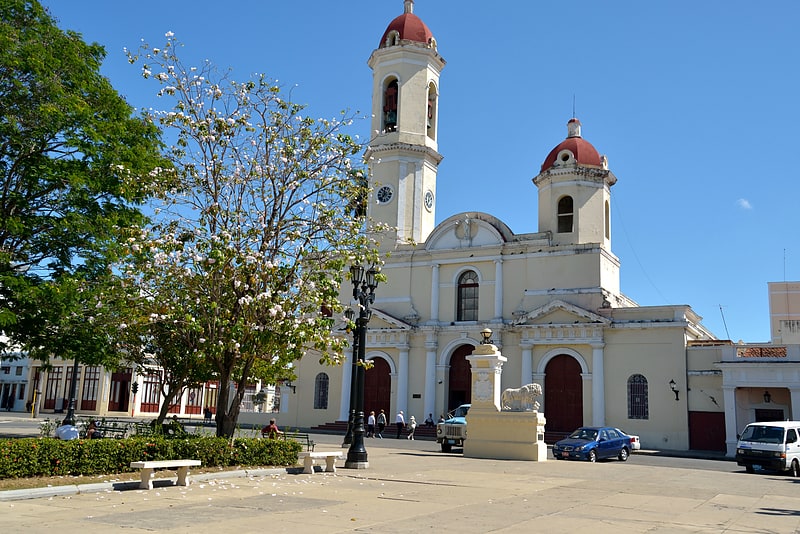
Also known as: Catedral de Nuestra Señora de la Purísima Concepción
Cathedral in Campeche, Mexico. The Our Lady of the Immaculate Conception Cathedral also called Cienfuegos Cathedral is a religious building is located opposite the Martí Park in the city of Cienfuegos in the province of the same name on the Caribbean island nation of Cuba.
The original building was completed in 1833 during the Spanish colonization, but expansions and improvements occurred in 1850, between 1852 and 1861, between 1866 and 1869 and between 1869 and 1875. It became an official cathedral in on February 20, 1903, following the Roman or Latin rite and is the mother of the Diocese of Cienfuegos (Dioecesis Centumfocencis) that was created by Pope Leo XIII by the apostolic brief "Actum praeclare".
The cathedral is part of the Historic Centre of Cienfuegos and, along with other historic buildings in the city center, was designated a World Heritage Site by UNESCO in 2005, because of its outstanding Neoclassical architecture.[1]
Address: Santa Isabel, 55100 Cienfuegos
Cinco de Septiembre Stadium
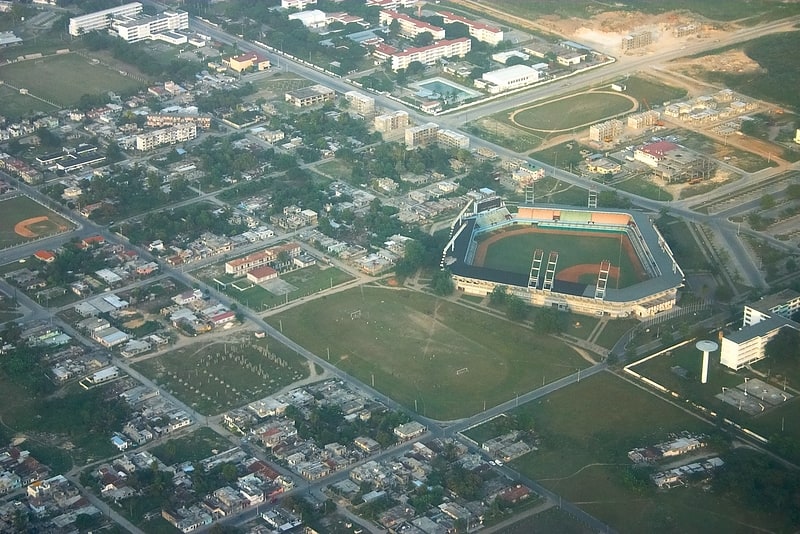
Also known as: Estadio Cinco de Septiembre
Stadium in Cienfuegos, Cuba. Estadio 5 de Septiembre is a multi-use stadium in Cienfuegos, Cuba. It is used mostly for baseball games and is the home stadium of Cienfuegos Camaroneros. The stadium holds 15,600 people. It opened on 9 January 1977.[2]
Address: Avenida 20 e/47 y 51, 55100 Cienfuegos
Historic Centre of Cienfuegos
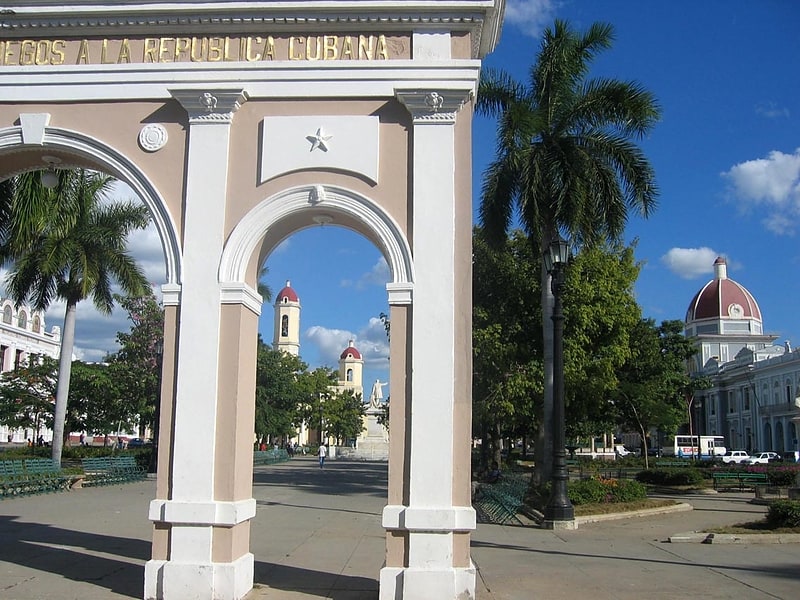
Also known as: Centro histórico de Cienfuegos
The Historic Centre of Cienfuegos, is located in the city of Cienfuegos in Cuba. It was declared a UNESCO World Heritage Site in 2005, because of its outstanding Neoclassical architecture architecture and its status as the best example of early 19th century Spanish urban planning. The historic centre contains six buildings from 1819–50, 327 buildings from 1851–1900, and 1188 buildings from the 20th century.[3]
Castillo de Jagua
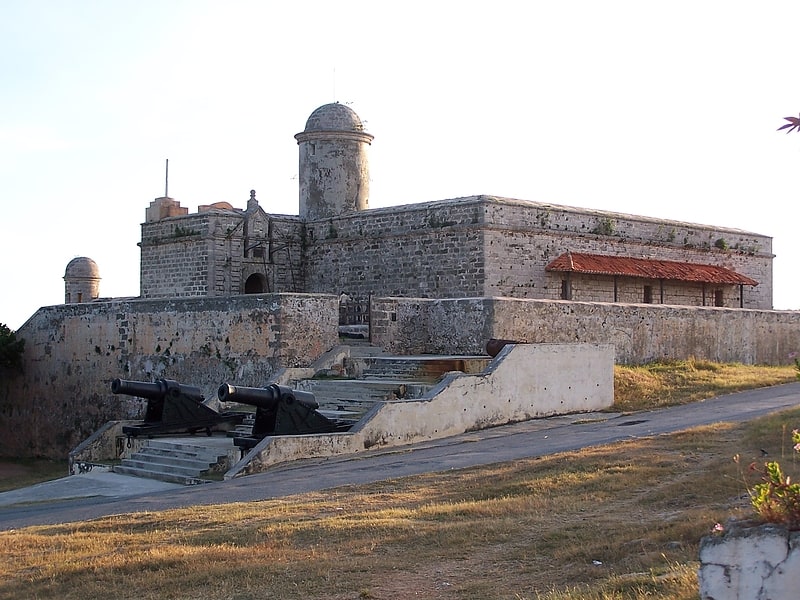
Also known as: Fortaleza de Jagua
Fortress in Jagua, Cuba. The Jagua Fortress is a fortress south of Cienfuegos in Cuba. It is located near the entrance to the Cienfuegos Bay, in the port of Jagua. It was originally named "Castillo de Nuestra Señora de los Ángeles de Jagua".[4]
Parque central José Martí
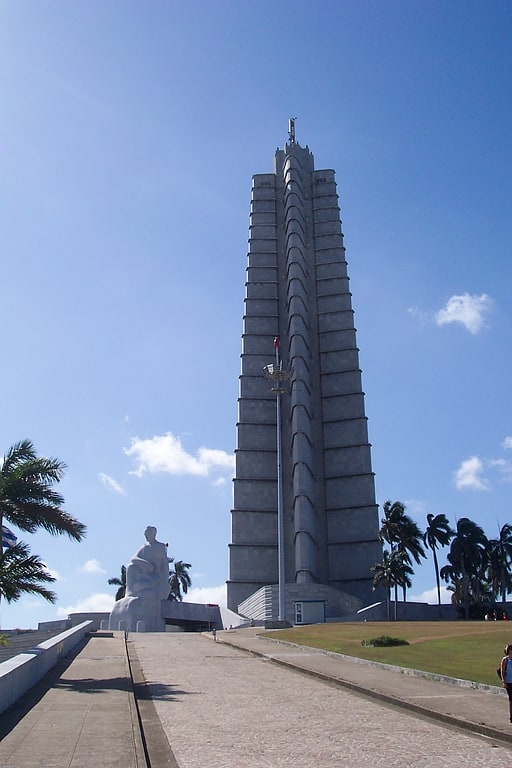
Also known as: Monumento a José Martí
Tower and statue for a revolutionary hero. The José Martí Memorial is a memorial to José Martí, a national hero of Cuba, located on the northern side of the Plaza de la Revolución in the Vedado area of Havana. It consists of a star-shaped tower, a statue of Martí surrounded by six columns, and gardens. It is the largest monument to a writer in the world.
The 109 m (358 ft) tower, designed by a team of architects led by Raoul Otero de Galarraga, is in the form of a five-pointed star, encased in grey Cuban marble from the Isla de Pinos. The design was eventually selected from various entries put forward from a series of competitions beginning in 1939. Entries included a version of the tower topped with a statue of Martí, and a monument similar to the Lincoln Memorial in Washington, D.C. with a statue of Martí seated within. The fourth competition held in 1943 resulted in the selection of a design by the architect Aquiles Maza and the sculptor Juan José Sicre. In order to proceed with construction of the monument, the Monserrat Hermitage, which occupied the proposed site, had to be demolished. Various impediments to the acquisition of the Hermitage by the state led to delays in the demolition and the start of building work, so by 1952 – when Fulgencio Batista seized power in a coup – work on the construction had still not begun.
Eager to garner popular support after seizing power, Batista committed to pushing ahead with the construction of a monument to Martí; but rather than proceeding with the competition winner, he selected the design that had come third in the competition, created by a group of architects headed by Raoul Otero de Galarraga, a 1905 graduate of Harvard University, and included Enrique Luis Varela, Batista's Minister of Works and his personal friend, and Princeton University Professor Jean Labatut. The monument was Raoul Otero de Galarraga's last major architectural and engineering project, and proudest accomplishment. The base was huge and so deep that when looking from above, the men working below-grade looked like miniature men, and rebar was so heavy that six to eight men were required to carry each piece. The concrete, used to fill the base, took several days to pour.
The selection of this design caused something of a public outcry, and as a result the design was modified. The position of the statue of Marti by sculptor Juan José Sicre's statue of atop the tower was moved to tower base. Construction of the tower began in 1953 on the 100th anniversary of José Martí's birth. The marble was delivered to Havana from Isla de Pinos, then cut to the chief architect's specifications, and polished in Gallo's factory. Sicre sculpt the huge stones of marble one at a time. Marti's thoughts were set with gold glass mosaic which came from Venice, Italy, and was personally inspected by Architect and Engineer, Raoul Otero de Galarraga and his son, Raul Otero.
The right to compensation for local inhabitants forced to move to make way for construction caused further problems. The place was known as Catalan Hill (Loma de Los Catalanes) because the Chapel of the Virgin of Montserrat was built there by Catalan immigrants. The Chapel was finally demolished and the monument was completed in 1958 during the final days of the Batista dictatorship.
The selected design includes an enclosed observation deck on the top floor, the highest point in Havana, accessible by elevator which gives commanding views over the city in all directions. (As of August 2016, the observation deck is closed to the public, for replacement of the original elevator.) Housed on the ground floor of the tower which overlooks the city, the memorial features two rooms of correspondence, writings and items from the life of José Martí and displays relating his life story. A third room illustrates the history of the Plaza de la Revolucion, and a fourth room is used for displays of contemporary art. The centre of the tower houses the elevator and features walls decorated with quotes from Martí. Among other items on display is a replica of the sword of Simón Bolívar presented to Fidel Castro by Hugo Chávez during his visit to Cuba in 2002.
Outside, facing over the plaza and towards the mural of Che Guevara on the Ministry of the Interior on the opposite side of the square, is an 18 m (59 ft) white marble statue of Martí carved in situ by Sicre and surrounded by six half-height marble columns. The platform where the statue is located is used as a podium when rallies take place in the Plaza de la Revolución.
Tourists are able to ascend the memorial and enjoy the best panoramic view of Havana. However, many tourists have complained about the ad hoc charges that are administered by the memorial's officials, which varies wildly depending on the members of staff manning the ticket booths. Imposter groundspeople have been known to charge tourists to ascend the memorial steps.[5]
Cementerio La Reina
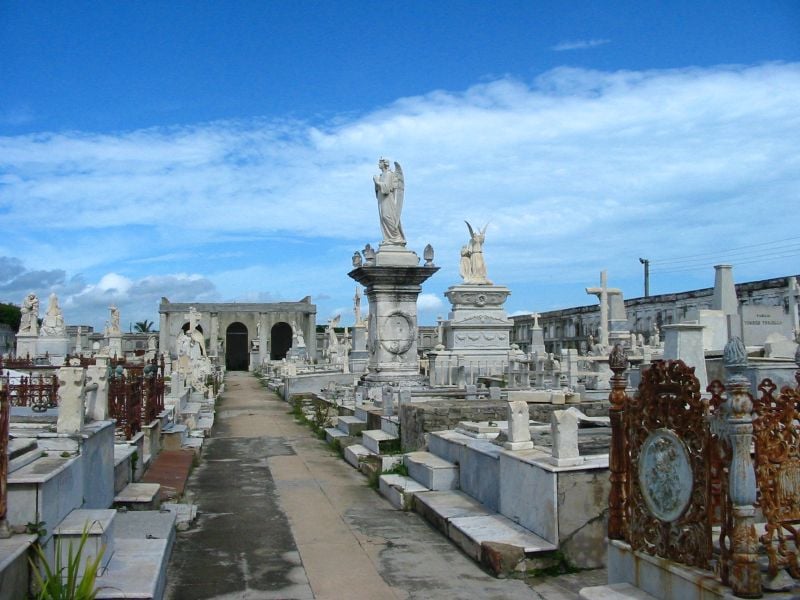
Cemetery
Casa de la Cultura Benjamin Duarte
